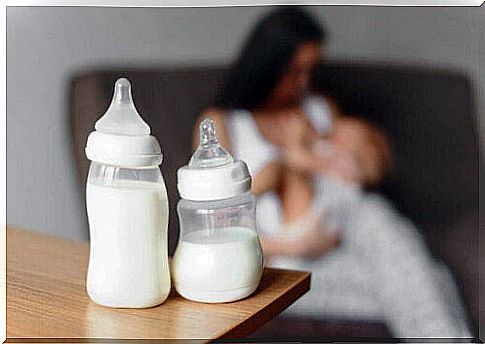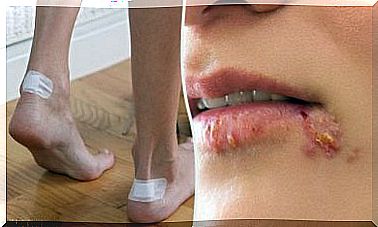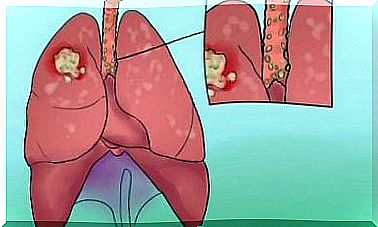Weaning Baby: How To Start On Food

Weaning a baby is the time in a baby’s life when they stop being breastfed or bottle-fed. This step can come at different ages and each family will begin the process in different ways and at different times. Whatever it is done, it should be a gradual experience performed with love.
Biological, social and cultural aspects affect how and when the process takes place. Science has not determined the best time for when weaning should take place. Nor have they decided the best way to do it.
What we do know about it is that breastfeeding alone (if possible) is very necessary for the first six months. However, the World Health Organization believes that it should not continue after a child’s second birthday.
Weaning baby: A varying process
Every culture is different when it comes to weaning babies.
In Inuit, for example, children are breastfed until about 7 years of age. In Western culture, however, such prolonged breastfeeding is not common at all. When and how to end it is a decision that is about different social factors and of course every single mother and child.
However, international organizations agree that breastfeeding should not take place after the age of two. They also recommend that until babies are six months old, they should only receive breast milk. For that fluid has all the necessary nutrients for this stage of life.

Types of weaning
Baby weaning can be performed in many different ways. Sometimes the mother has no choice. This may be due to medical reasons or other conditions that prevent her from breastfeeding more, such as separation between mother and child or infectious diseases.
Voluntary weaning is when either the baby or the mother decides it is time to stop breastfeeding. If it is the child’s “decision”, then they can simply lose interest and do not want to continue – it can happen suddenly or gradually.
The mother may also decide that it is the right time to stop breastfeeding for either personal or work reasons.
We should point out that the baby may express dissatisfaction if the mother decides to wean from breast milk. If it is not the child’s initiative, then it can often happen. It is a process that requires effort, and we recommend that you carry it out gradually and with a lot of patience.
How to introduce the first food
The time when a child begins to get solid food – and what that food should consist of – are attitudes that have changed over the years. In general , pediatricians recommend that a baby start eating solid food when they can hold their head and open their mouth when they see food coming. It is usually between 4- and 6-month-olds.
A baby who has not eaten solid food before may have difficulty eating them. They may even refuse the first meals. It is therefore a good idea to give them half a spoonful at a time. It will help them move the food from the front of the mouth and back so they can swallow it.
It is not good to force a baby to eat. Instead, it is a good idea to use songs and games to help them learn to eat gradually. If you think they have not eaten enough, then you can always offer some breast milk or a bottle to them.
There are two ways to introduce the first types of solid foods into a baby’s diet. The first is the traditional way, which involves baby puree to start with, and then food with other textures.
The other is the one that is self-regulated by the baby. There, the parent allows them to take pieces of food with their hands. Then they can get them in their mouths, and taste them to get used to solid food gradually.

Tips for weaning the baby
Weaning of baby should be done gradually. This process of stopping breastfeeding as the baby’s primary source of food is not the same for all babies. Before the age of 12 months, the mother will gradually reduce the number of breastfeeds. In contrast, parents of babies over the age of one tend to use distractions such as playing or taking a walk.
We recommend that you never give your baby a resounding “no” when they want to breastfeed. You can tell them they can breastfeed when they get home. You can also distract them with toys to try to make them forget their desire to breastfeed for a while.
Once your baby can understand, then you can start “negotiating” and telling them that breastfeeding is only for bedtime for example.
It is important to keep in mind that weaning a baby should not begin at a particularly eventful time in their lives. For example, do not do it when they have just started in institution, if you have recently moved or if you are expecting a new child in the family. One should also not do it during the so-called tiger jumps.
You will need to remember that weaning is a stressful time for the baby. Because of this, it is a good idea to spend more time with them to compensate for stopping breastfeeding.









